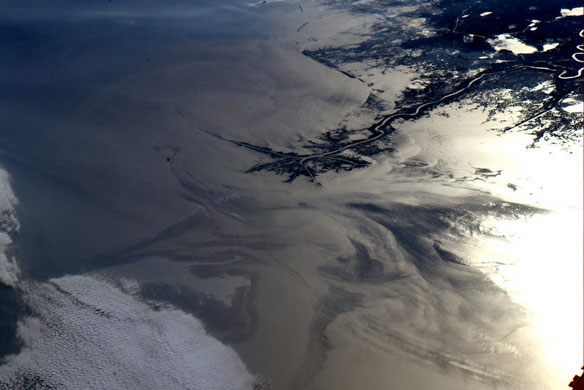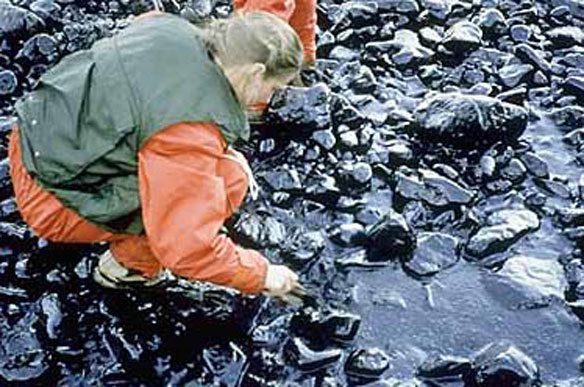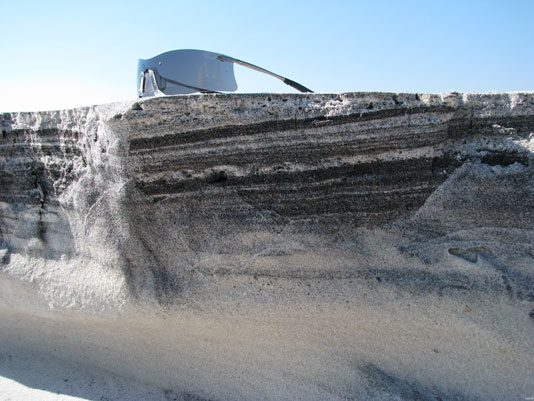
Gulf oil spill. Photo source: NOAA
Excerpts; from Lawrence Berkeley National Laboratory
One year after the notorious BP Deepwater Horizon oil spill in the Gulf of Mexico and two decades after the Exxon Valdez spill in Prince William Sound off the coast of Alaska one scientific lesson is clear, microbes matter! Despite vast differences in the impacted marine ecosystems and the circumstances of these two worst oil spills in U.S. history, oil-degrading microorganisms played a significant role in reducing the overall environmental impact of both spills…

Exxon Valdez Oil spill. In many locations in Prince William Sound, the action of tides and currents distributed oil throughout the entire intertidal zone. In Northwest Bay on Knight Island, tides have deposited oil on this rocky beach face up to the top of the intertidal zone. During the initial response to the spill, NOAA scientists surveyed oiled beaches, such as this one, to assess the depth of oil penetration. Caption and photo source: NOAA

The amount of oil visible on the surface of a beach doesn’t necessarily indicate the amount of oil on that beach, since oil can penetrate into beach sediments. Scientists collected samples of water and sediments for analysis of inorganic and organic constituents, benthic invertebrates, and oil and microorganism fingerprints before and after petroleum-associated product arrived on shore. Caption and photo source: USGS
A Photos Gallery: Exxon Valdez 20 Years Later, Oil Remains, The National Geographic
Exxon Valdez Anniversary: 20 Years Later, Oil Remains, The National Geographic
Two decades after the worst oil spill in U.S. history, huge quantities of oil from the tanker Exxon Valdez still coat Alaska’s shores with a toxic glaze, experts said in March 2009. Oil is tucked into isolated coves and underneath the sand. Prince William Sound is what ecologists call a closed system—it’s not exposed to big, pounding waves, so the oil has time to seep into the sand, according to Margaret Williams, who oversees conservation in the Bering Sea for the nonprofit World Wildlife Fund (WWF). “The damage that [the spill] created is something beyond anyone’s imagination…”









